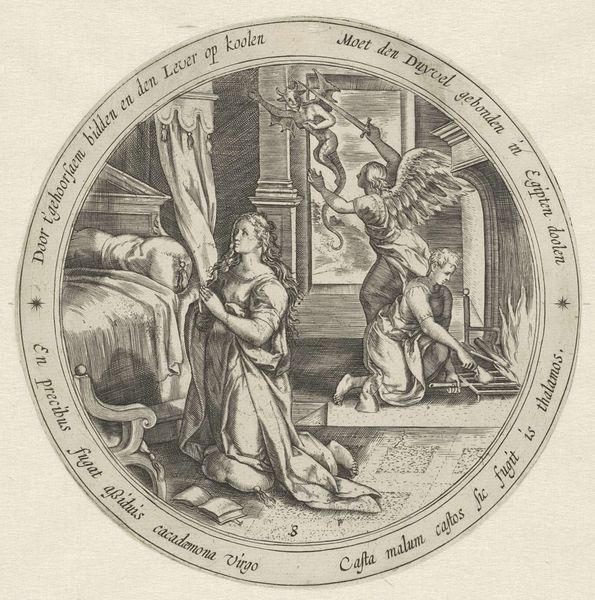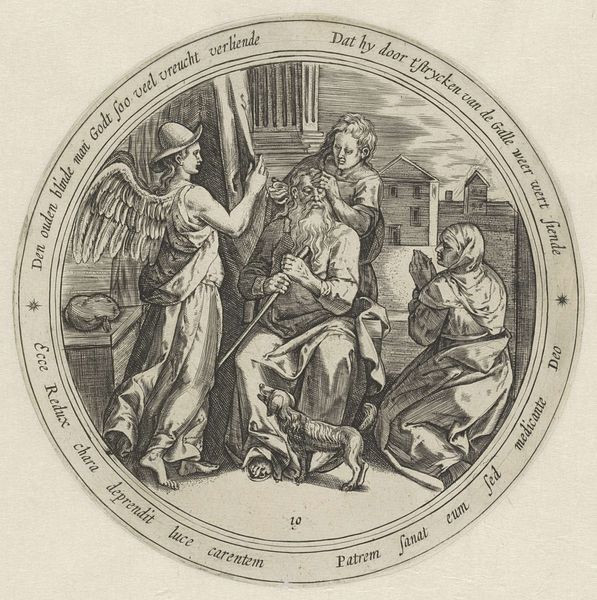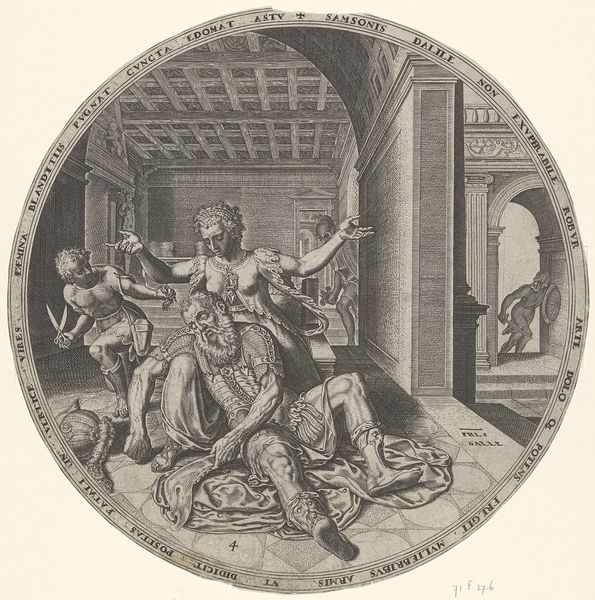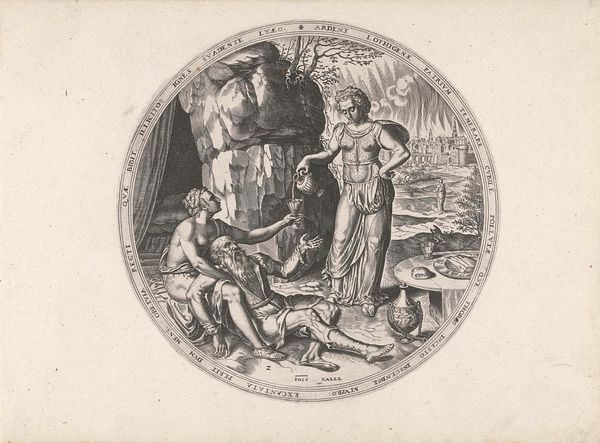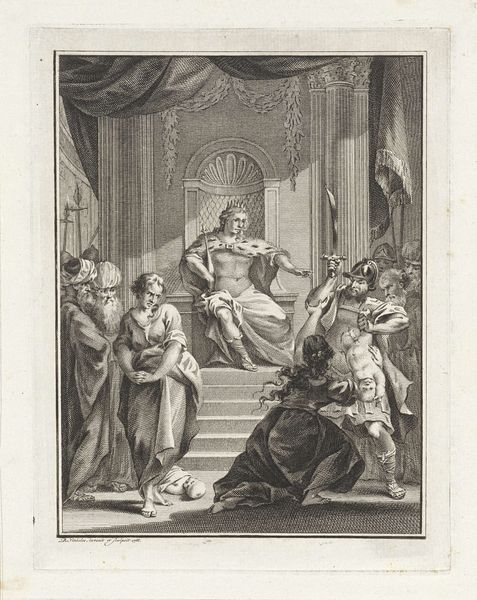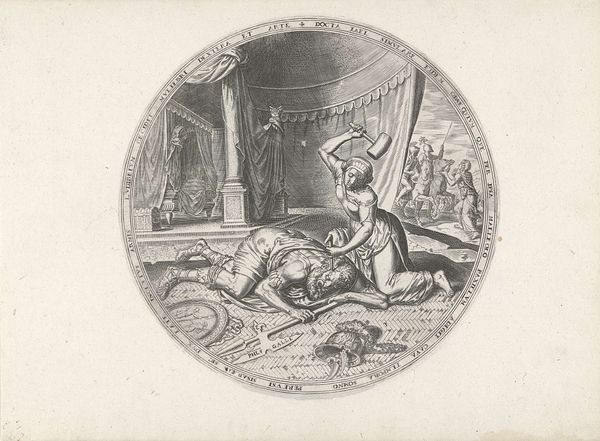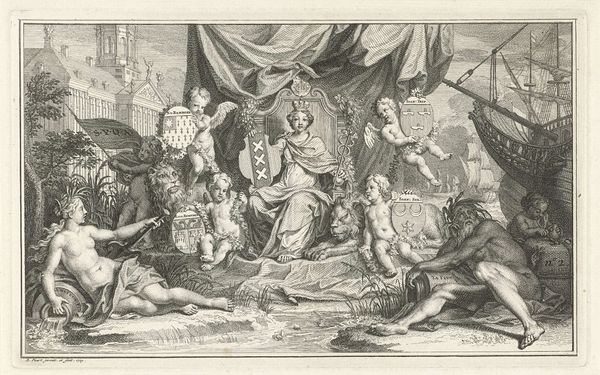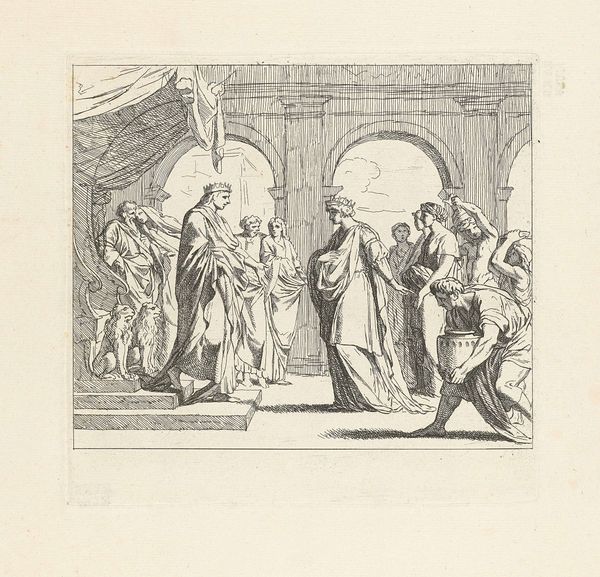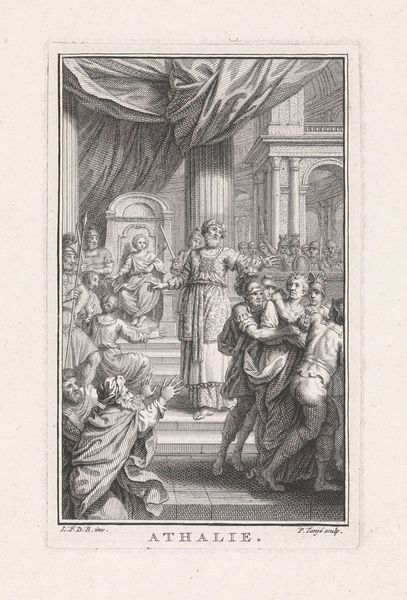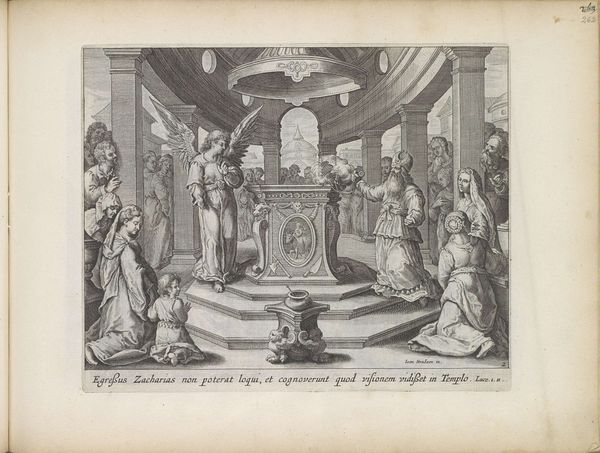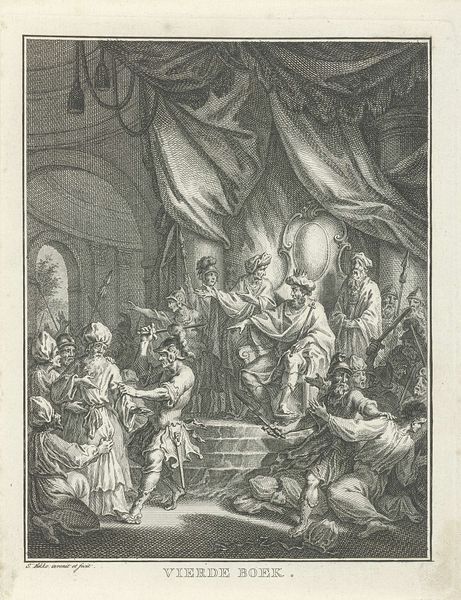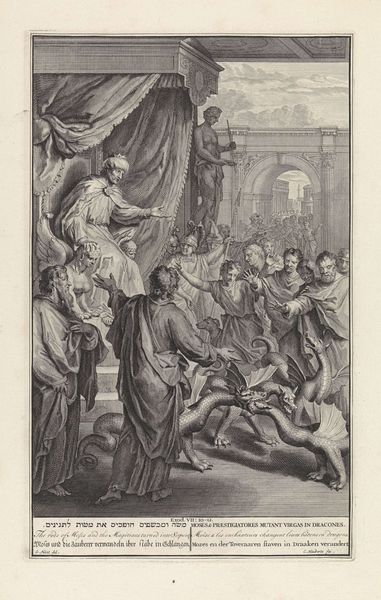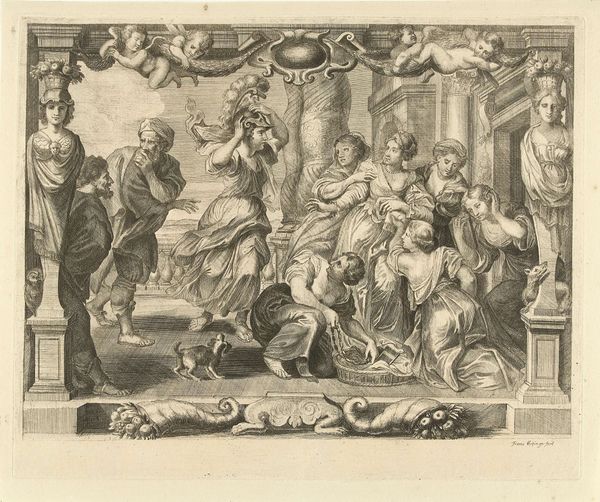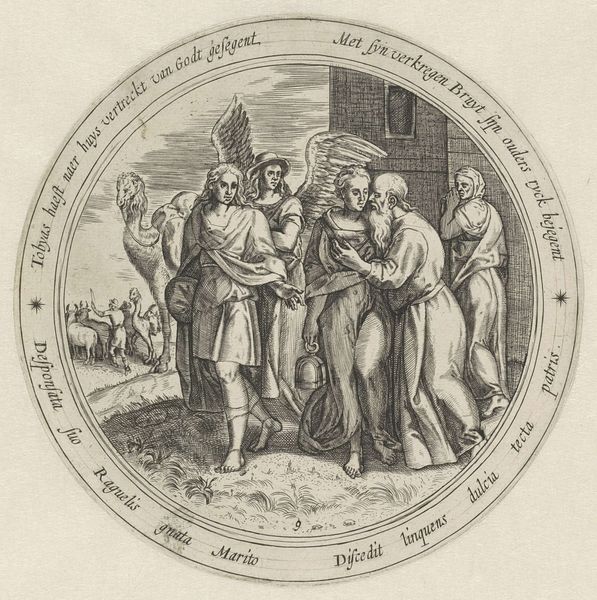
print, engraving
# print
#
old engraving style
#
mannerism
#
history-painting
#
engraving
Copyright: Rijks Museum: Open Domain
This print, Salomo's afgoderij, was made by Philips Galle around the late 16th century. As an engraving, it all began with a metal plate, likely copper. Galle would have used a tool called a burin to cut lines into the surface, a painstaking process demanding immense skill. Look closely, and you'll see the crisp, precise lines that define the forms, from the figures to the architectural setting. The density of these lines creates areas of shadow and depth. The printmaking process allowed for the mass production of images like this one, fueling the spread of ideas during the Reformation. Galle’s image speaks to a moment in history when religious doctrine was disseminated through the skillful manipulation of materials and manual labor. By appreciating the materiality and making of this print, we gain a deeper insight into the economic, social, and religious contexts that shaped its creation. It is a reminder that even seemingly 'simple' images can hold complex stories about the world in which they were made.
Comments
No comments
Be the first to comment and join the conversation on the ultimate creative platform.
